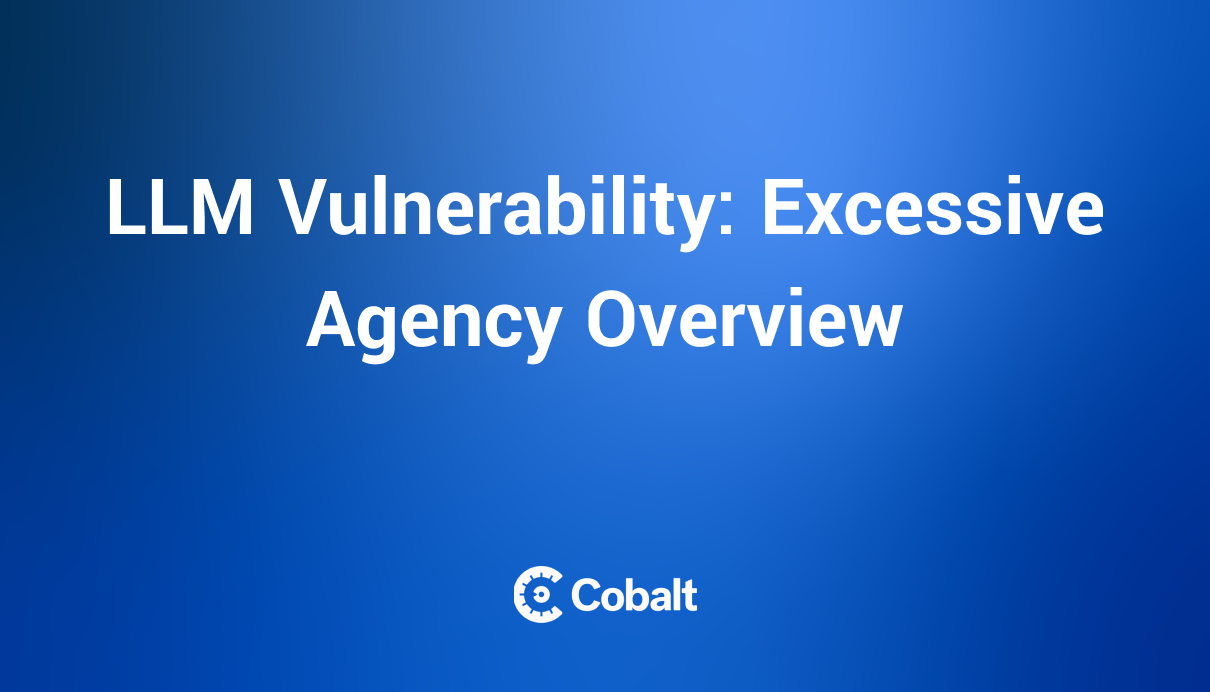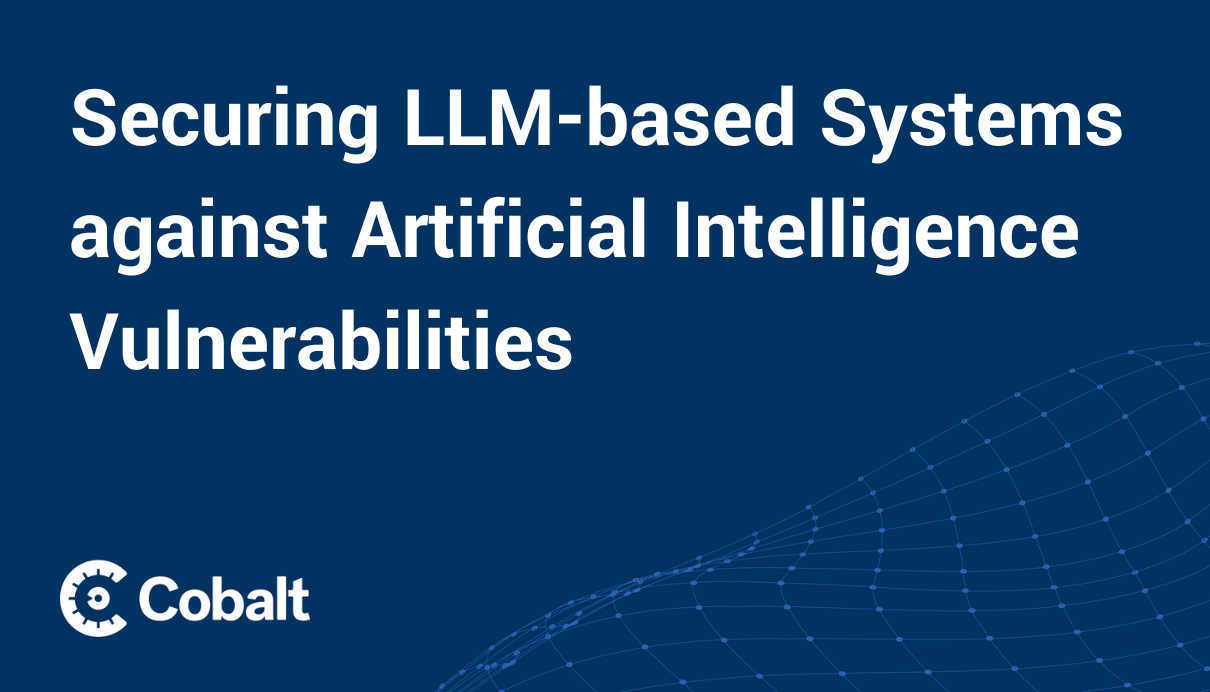Large Language Models (LLMs), such as GPT-4, Gemini, and Mistral have become indispensable for powering everything from chatbots to content generation tools across various sectors. These models function by processing and generating text from an extensive dataset and are valuable in efforts to enhance the efficiency and engagement of customer service and content creation.
Yet, the deployment of LLMs introduces significant cybersecurity challenges. In environments where safeguarding personal, intellectual property, and financial data is critical, the potential for cyber-attacks and unauthorized data access poses a substantial risk.
To mitigate these risks, it's essential to adopt comprehensive cybersecurity measures. This includes implementing secure output handling procedures to prevent unauthorized data exposure and ensuring compliance with privacy regulations. Regular security audits, data encryption, and access control mechanisms are also crucial for protecting against unauthorized access and maintaining the integrity of the data processed by LLMs.
LLM Operation
LLMs analyze vast amounts of data such as terabytes or even petabytes of information in order to "learn" the patterns, contexts, and nuances of human language. They employ neural networks, specifically transformer architectures, which allow them to assess the relationships between words in a sentence, across sentences, and within large documents by processing the input text in parallel rather than sequentially. This enables LLMs to predict the next word in a sentence in order to generate coherent and contextually relevant text based on the prompts they receive.
This mechanism of understanding language also introduces specific cybersecurity challenges.
For example, as LLMs process vast and diverse datasets, they may inadvertently learn and replicate sensitive information included within their training data. In addition, the complexity of transformer architectures, while beneficial for understanding context, can make it difficult to predict or control the model's outputs, increasing the risk of generating inappropriate or sensitive content if not properly monitored and managed.
Relying on external data sources for continuous learning can also expose an LLM to malicious data injection attacks, where attackers deliberately influence the model's training process or output by feeding it misleading or harmful information. These vulnerabilities highlight the importance of secure data handling practices and the careful curation of training datasets.
Insecure Output Handling
In the context of LLMs, Insecure Output Handling pertains to the inadequate validation, sanitization, and management of outputs generated by these models before they are utilized by downstream components or presented to users.
This risk emerges from the LLMs' ability to produce content based on varied prompt inputs, granting users indirect means to influence the functionality of connected systems. Insecure Output Handling was identified as one of the OWASP Top 10 risks for LLM Applications.
The primary concern here is that the system-directed output intended for further processing by other system components requires strict sanitization to prevent the execution of unauthorized commands or code. This is particularly relevant in scenarios where LLM output might be dynamically inserted into databases, executed within system shells, or used to generate code interpreted by web browsers. Without proper handling, such outputs could lead to a range of security issues, including Cross-Site Scripting (XSS), Server-Side Request Forgery (SSRF), or even remote code execution.
Examples of Insecure Output Handling
Unintended SQL Commands: Imagine generating database queries from user inputs through an LLM, only for the LLM to mistakenly create a malicious SQL command that deletes data. If the application executes this command without proper checks, it could lead to significant data loss. This example stresses the necessity of meticulously reviewing LLM outputs before they are used in sensitive operations like database interactions.
Remote Code Execution via LLM Output: When LLM outputs are directly fed into system shells or functions such as exec or eval without undergoing stringent sanitization, the risk of remote code execution emerges. This scenario exemplifies the dangers of using unvalidated LLM-generated content in a manner that could allow the execution of unauthorized commands, potentially compromising the integrity and security of the system.
Cross-Site Scripting (XSS) via LLM-Generated Content: Unsanitized JavaScript or Markdown produced by an LLM and sent to users can lead to XSS attacks when interpreted by web browsers. This scenario highlights the critical need for filtering LLM outputs to prevent executable code from reaching end-users.
Vulnerability in LangChain (CVE-2023-29374): LangChain version 0.0.131 and earlier was found vulnerable to prompt injection attacks due to a flaw in the LLMMathChain. This vulnerability, identified as CVE-2023-29374, allowed attackers to execute arbitrary code using the Python exec method, receiving a critical severity score of 9.8.
Causes of Insecure Output
For understanding and mitigating the insecure output, it can be beneficial to understand the cause of the insecure output. This can stem from several sources.
Hallucinations: This occurs when LLMs generate information that is not present in the input data or is outright false. Hallucinations are a direct consequence of LLMs trying to fill in gaps in their understanding of complex inputs. These inaccuracies can mislead downstream systems or users, potentially leading to decision-making based on incorrect information. The tendency of LLMs to "hallucinate" underscores the need for rigorous output validation to ensure the reliability and safety of the generated content.
Bias in Training Data: LLMs learn from vast datasets, and these datasets can contain biases—either intentional or unintentional. When LLMs are trained on biased data, their outputs can reflect or even amplify these biases. This not only leads to ethical concerns but can also cause security risks if the biased outputs are used to make automated decisions or are presented in sensitive contexts. Addressing bias requires careful curation of training data and continuous monitoring of model outputs for unintended biases.
Input Manipulation: Attackers can exploit the way LLMs process inputs by crafting prompts designed to manipulate the model's output. This can involve subtly guiding the LLM to generate outputs that serve the attacker's purposes, such as revealing sensitive information or generating malicious code. Such manipulation tactics highlight the importance of implementing safeguards against prompt injection and ensuring that LLMs handle inputs in a manner that minimizes the risk of malicious exploitation.
Over Reliance on External Data and Retrieval-Augmented Generation (RAG): Retrieval-Augmented Generation (RAG) is a technique designed to augment the capabilities of Large Language Models (LLMs) by integrating task-specific or real-time data into their responses. This approach enables LLMs to provide answers that are not only contextually relevant but also up-to-date, potentially incorporating business-specific knowledge not available at the time of their initial training. Such enhancement can significantly increase the factual accuracy and applicability of LLM outputs to specific domains or tasks.
However, this reliance on external sources and RAG introduces its own set of challenges. When LLMs draw on external data or use RAG to augment their responses, there's a risk of incorporating misleading or incorrect information, especially if the data quality is not rigorously controlled. Moreover, RAG depends on effectively matching input queries with relevant data from a vector database. If the match is poor or the external data is compromised, the output's reliability can significantly diminish. Such inaccuracies not only undermine the trustworthiness of LLM-generated content but can also lead to insecure output handling when these outputs are used to make decisions or interact with other systems.
Mitigation Strategies for Insecure Output Handling in LLMs
Implement Rigorous Validation and Sanitization Processes: Establish robust processes to validate and sanitize LLM outputs before they are used or displayed. This includes checking for and neutralizing potentially harmful content, such as executable code or malicious commands, and verifying the factual accuracy of the information provided. Tools and techniques from traditional software security practices can be adapted for use with LLM outputs.
Adopt a Zero-Trust Approach for LLM Outputs: Treat all LLM-generated content as untrusted by default. Apply strict access controls and validation rules to ensure that outputs do not inadvertently compromise system security or data integrity. This approach minimizes the risk of malicious or erroneous content causing harm.
Utilize Sandboxed Environments for Code Execution: To minimize the risk of insecure output handling, especially when executing custom Python code or similar from the LLM, use highly secure and isolated sandboxed environments. Executing code only within a dedicated temporary Docker container, for instance, can significantly limit the potential impact of malicious code. Sandboxing provides a controlled setting where outputs can be generated and evaluated without compromising the broader system or network.
Emphasize Regular Updates and Patching: Keeping LLM applications and their dependencies up to date is crucial in mitigating security risks. Regularly apply updates and patches to the LLM software, libraries, and underlying infrastructure to protect against known vulnerabilities. This practice, coupled with continuous monitoring for new security advisories, ensures that your systems are safeguarded against the exploitation of recently discovered vulnerabilities.
Secure Integration with External Data Sources: When using external data or implementing RAG, ensure the security and reliability of the sources. This might involve encrypting data transmissions, authenticating data sources, and continuously monitoring the input from these sources for signs of tampering, malicious injection or simply unintended content.
Continuous Monitoring and Auditing: Regularly monitor LLM interactions and outputs for unexpected or suspicious behavior. Implement logging and auditing mechanisms to track the usage and outputs of LLMs, facilitating the identification and analysis of potential security incidents.
Incorporate Human Oversight: While automation offers many benefits, the inclusion of human oversight remains crucial, especially in critical or sensitive applications. Humans can provide an additional layer of validation for outputs that automated systems might not fully understand or correctly assess, particularly in contexts where nuance and judgment are required. While perhaps not feasible in production, this practice can be suitable during development and rollout.
Utilize Security Frameworks and Standards: Align LLM deployment and operation with recognized security frameworks and standards, such as the OWASP Application Security Verification Standard (ASVS) and NIST Cybersecurity Framework.
These frameworks provide structured approaches to securing software applications, including aspects relevant to LLM output handling. Moreover, compliance with industry standards like ISO/IEC 27001, which specifies requirements for an information security management system (ISMS), can ensure that LLM deployments are aligned with best practices for data security and risk management.
Adopting these standards not only enhances the security of LLMs but also builds trust with users and stakeholders by demonstrating a commitment to protecting sensitive information and maintaining high ethical standards.
Threat Modeling and Security Testing: Conduct threat modeling exercises focused on LLM integration to identify potential security risks and vulnerabilities. Regular security testing, including penetration testing and fuzzing of LLM inputs and outputs, can help uncover vulnerabilities that could be exploited through insecure output handling.
Navigating the Cybersecurity Landscape of LLMs
The interplay between the rapid advancements in LLM capabilities and the evolving landscape of cyber threats presents a continuous challenge for cybersecurity professionals. Yet, it also offers an opportunity to innovate and strengthen the resilience of these transformative technologies.
The adoption of a layered security strategy, integrating real-time threat detection, adherence to industry standards, and ethical considerations, represents a holistic approach to securing LLMs. This strategy not only addresses the current spectrum of cybersecurity challenges but also anticipates future vulnerabilities, ensuring that LLMs can continue to serve their invaluable role in driving technological advancement and societal progress. The future of cybersecurity in the era of LLMs is not just about defending against threats but also about fostering an environment where trust, safety, and innovation thrive together.
Learn more about AI pentesting services offered by Cobalt.











